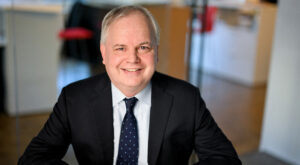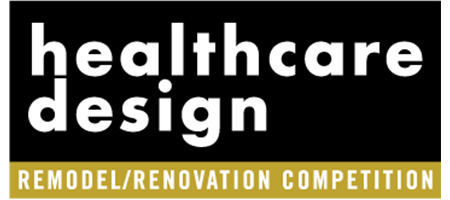
Steven Kennedy (Courtesy of FCA)
The world of healthcare facility design extends far beyond determining ideal floor plans or designing patient rooms. Often considered an unsung hero in comparison to its architecture and design counterparts, medical equipment planning plays a pivotal role in the creation of care spaces.
As medical equipment rapidly evolves, from the integration of robotic surgery systems to breakthroughs in 3D printing, medical equipment planning has steadily grown as a specialty service, driven by demand for expertise in navigating increasingly complex healthcare technologies.
What is medical equipment planning?
Medical equipment planning is a process that ensures healthcare facilities are equipped with the right medical devices, technology, and infrastructure to support patient care. It involves selecting, specifying, and strategically placing medical equipment within a healthcare environment.
As medical equipment and technology standards rapidly evolve, healthcare facilities must be proactive in adopting the latest technologies. Without a clear strategy and understanding of emergent technology, owners and operators risk falling behind in patient care, operational efficiency, and competitiveness.
That’s where medical equipment planners come in.
These planners are responsible for understanding and integrating the technological needs and tools for healthcare providers while keeping the facility budget and regulations in mind. A proficient planner examines the given organization’s needs, as well as those of the clinicians and care teams, and provides recommendations that optimize staff workflow and enhance patient care.
Equipment planning teams evaluate a wide range of factors in their reports, ranging from the quantity, type, and number of electrical and gas outlets in a space, to more complex issues such as optimizing the path of travel in a busy operating room (OR) suite to minimize potential collisions and create efficient workflows.
To better understand the field, it’s important to note that there’s no formal education path into the profession. Instead, many professionals enter the field through a variety of backgrounds—some with experience in architecture, others in procurement for hospital systems or clinical operations—before developing a specialty in equipment planning.
This diversity yields a multidisciplinary team with a vast array of perspectives and expertise, making a medical equipment planner an asset during the process of designing healthcare facilities.
By leveraging these varied experiences, they bring unique viewpoints that allow them to collaborate with both architects and medical professionals from the outset of the design process for more seamless technology integration.
Planning medical equipment selection
Projects can benefit from involving medical equipment planners directly into the planning process from early phasing to completion. When folded into architecture teams, these initiatives benefit from a multilayered perspective that considers both form and function simultaneously.
For instance, those with architectural backgrounds offer strong spatial visualization skills, allowing them to determine whether requested or proposed equipment can be accommodated within a given space.
In other scenarios, planners can help to identify where additional infrastructure is needed early in the process, ultimately mitigating costly changes or delays during construction.
This collaborative method allows for detailed, visualized plans in which equipment—from hand sanitizer dispensers to advanced imaging and therapy equipment—is identified and strategically placed for optimal functionality, flow, and regulatory compliance.
Not only does this approach improve efficiency, but it can also result in cost savings by reducing redesign expenses, change orders, and delays by addressing equipment selection from the start. The result is more intuitive spaces that enhance the experience for both staff and patients.
Adopting latest medical technology
As medical equipment and treatments rapidly evolve, healthcare facilities must develop new approaches to adopting the latest technologies.
Medical equipment planners play a crucial role in future-proofing facilities by assessing emerging technologies, fostering strong relationships with manufacturers, and leveraging clinician feedback to identify progressing practical needs. The key is to create adaptable spaces that can accommodate future innovation.
For example, when a leading children’s hospital was considering the adoption of a new surgical robotic system, FCA supported the evaluation process between the newly released Dv5, which introduced new capabilities, and the established Da Vinci Xi platform. FCA conducted a full evaluation based on surgical volumes, specialties, and hospital goals to determine If the new system aligned with the hospital’s specific needs.
All stakeholders including surgeons, OR staff, clinical engineering, information technology, and administration were engaged in the process. Once the system was selected and the capital expenditure approved, an infrastructure readiness assessment was conducted to confirm the placement and structural requirements.
Driving patient-centric care
By anticipating these new technologies, medical equipment planners help healthcare facilities remain at the forefront of innovation and patient care—a role that will only grow in importance.
With an integrated approach, specialized knowledge, and experience, these integral project team members can help bridge the gap between architectural vision and clinical functionality, ensuring that each facility is designed to meet tomorrow’s possibilities.
Steven Kennedy is director of medical equipment planning at FCA (Philadelphia) and can be reached at [email protected].












